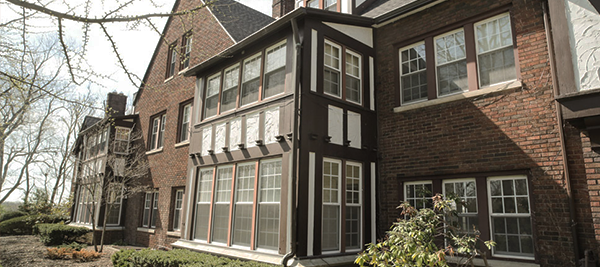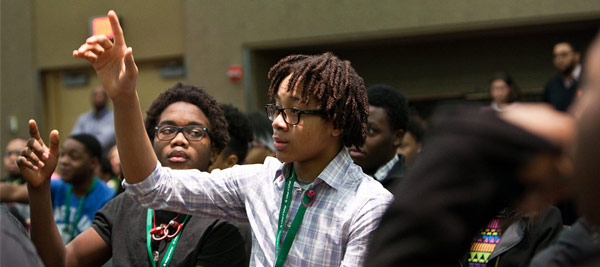Access to an affordable home under fair and sustainable terms is central to the American promise of opportunity, a source of security and pride. But years of misconduct by banks and lenders, inadequate rules and enforcement, and record unemployment have ravaged the ideal of Home Opportunity that is integral to the American Dream. Rebuilding that dream is in our national interest and crucial to our economic recovery.
Though it has been over five years since the economic collapse and commencement of the Great Recession in 2008, the recovery is far from complete and has failed to be equitable for all Americans. As of November 2013, there were approximately 812,000 homes in some stage of the foreclosure process.1 The number represents a significant drop since the preceding month and year, and indicates improvement in the housing market.
However, there are still millions of Americans who are at risk of losing not only their material assets and savings, but their homes as well. The massive loss of homes, moreover, means families uprooted, children disconnected from their schools and communities, and senior citizens’ economic security destroyed. It hampers employment, education, public safety, and our nation’s broader economic recovery.
In November 2013, there were 46,000 completed foreclosures, new foreclosure filings on 113,454 properties, and approximately two million mortgages that were in delinquency, defined as 90 days or more past due.2 In addition, as of December 2013, there are 9.3 million homes that are deeply underwater, meaning that the combined loan amount secured by the property is at least 25 percent higher than the property’s market value.3 Even as the housing market improves, the Obama administration cautions that the economic recovery remains fragile.4
Furthermore, the recovery has not reached all Americans. Unequal opportunity and racial discrimination by banks, brokers, and others continue to disproportionately harm communities of color. According to a study released in May 2013 by the Alliance for a Just Society, communities that are majority people of color experienced foreclosures at almost double the rate of predominantly white communities. Families in communities of color suffered a loss of wealth on an average of 30 percent higher per household. While some wealth has been regained since the beginning of the crisis, it has mostly been through the stock market, and thus, affluent Americans are disproportionately benefiting from the recovery. As a result, communities of color are being left behind.5
The impact of the crisis has not been limited to homeownership. According to a report by the U.S. Conference of Mayors, the number of renters affected by foreclosures has tripled since the beginning of the crisis. An estimated 20 percent of foreclosures are in rental properties, and 40 percent of families facing foreclosure-related evictions are renters. This translates into millions of Americans at risk of homelessness, many of whom are children.6 In addition, there is still residential discrimination and segregation throughout the country. This historical legacy concentrates economic downturns into particular communities and as a result, the crisis hits African Americans and Latinos with strong force.7
In response, experts and affected communities have worked together to identify a range of practical solutions to this troubling reality. Their efforts have focused on stemming foreclosures, restoring communities, protecting fair housing, and assuring that homeownership remains an accessible pathway to American opportunity. In early 2012, The Opportunity Agenda and its partners proposed a Compact for Home Opportunity that assembled and explained the most promising of those solutions in plain terms. The Compact is intended to propel these much-needed proposals into the public and political discourse and to inform concrete policymaking.
This report updates the status of the Compact’s recommendations from May 1, 2013 to December 1, 2013, and includes major developments in December 2013. It documents the progress that was made around the country in adopting and implementing these proposals. As to each recommendation, we provide an overall update, as well as specific actions taken—or not taken—by such relevant actors as the Obama administration, Congress, states and municipalities, and the lending industry. This update supplements two prior ones that covered February through August of 2012 and September 2012 through May 2013, respectively. The previous updates were released in January 2013 and August 2013.
As we describe below, there was significant progress, as well as frustrating delay, and even regression, by some actors. Positive developments include the confirmation of Mel Watt, a longtime champion of consumer protection and civil rights, as head of the Federal Housing Finance Agency, which oversees Fannie Mae and Freddie Mac; Richmond, California, and other cities using the power of eminent domain to purchase and refinance mortgages; federal regulators’ proposal of a new Qualified Residential Mortgage rule that lowers the down-payment requirement and benefits low- to middle-income borrowers; Nebraska’s enactment of a land bank law; localities increasingly passing vacant property registration legislation; Utah’s homelessness prevention program; the U.S. Department of Housing and Urban Development’s proposal of a rule on Affirmatively Furthering Fair Housing; coordination and success on equal opportunity enforcement; the Consumer Financial Protection Bureau’s roll-out of new mortgage servicing rules; and increased use of inclusionary zoning by cities across the country.
However, there was a lack of progress, and even regression, on several important solutions, such as making mediation a mandatory part of the foreclosure process, requiring principal corrections, refinancing legislation, positive reform of Government-Sponsored Enterprises, ensuring consumer readiness, and supporting community development and homelessness prevention programs. Congress has been particularly recalcitrant, ignoring multiple opportunities to help stem foreclosures, restore communities, protect fair housing, and assure that homeownership remains accessible. At this critical moment in time, this status report provides a roadmap to the progress made, and the work still to be done.
Breaking Developments
This report covers developments from May 1, 2013 to December 1, 2013, and includes major developments in December 2013. While a future report will discuss in detail developments in 2014, we note here several important items that occurred as this report was going to press.
- On January 6, Mel Watt was sworn in as the new director of the Federal Housing Finance Agency. One of his first actions was to delay a proposed increase in the fees that Fannie Mae and Freddie Mac charge lenders to guarantee mortgages. The increase had been announced by former Acting Director Edward DeMarco and would have gone into effect in March and April, making mortgages more expensive. The “g-fees,” which would have been increased by 0.1 percent, are usually passed on by lenders to borrowers.8
- In January 2014, Congress allowed the Mortgage Forgiveness Debt Relief Act to expire. This means that, for the first time since 2007, people who have had their homes foreclosed upon will have to pay income taxes on forgiven debt that was accumulated due to a mortgage. Congress allowed this benefit to expire despite an estimate from the National Association of Attorneys General that 7.1 million homes with mortgages, 14.5 percent of the national total, are still in negative equity.9
- On January 29, the House of Representatives passed farm subsidy and nutrition program legislation that would cut $8.6 billion from the Supplemental Nutritional Assistance Program (SNAP or “food stamps”).10 The legislation does not contain the originally proposed work and drug testing requirements for SNAP recipients; however it would effectively cut $90 in monthly food aid for approximately 850,000 households. Anti-hunger advocates warned that it would eliminate 34 meals per month for the affected households, and critiqued the legislation as corporate welfare at the expense of struggling families.11 On February 4, the Senate passed the legislation and President Obama, on February 7, signed it into law.12
- On January 9, President Obama announced five of the areas that will be part of the “Promise Zones” Initiative to help restore communities particularly hard hit by the Great Recession. The areas include San Antonio, Los Angeles, Philadelphia, Southeastern Kentucky, and the Choctaw Nation of Oklahoma. As part of the initiative, the federal government will give the communities preferential consideration for 25 federal grant programs and provide technical assistance to help them realize their economic revitalization plans. The plans include expanding affordable housing as well as bolstering adult education, job training, and early literacy programs.13
- In January 14, 2014, Chicago Mayor Rahm Emanuel proposed a five-year plan to increase housing opportunities and community development. The plan, which Emanuel introduced to the Chicago City Council, would invest $1.3 billion to rebuild, rehabilitate, and preserve 41,000 housing units, 75 percent of which would be reserved for Chicagoans who earn 60 percent of the local median income, or $44,000 for a family of four. The plan also includes putting 8,000 vacant and foreclosed properties back on the market by using vacant properties for residential development, community gardens, or allowing residents to expand their private yards by purchasing adjacent vacant lots. In addition, the City would encourage banks to offer better foreclosure prevention counseling and neighborhood lending in distressed neighborhoods, and expand affordable housing units in mixed-income communities to low-income renters and recipients of welfare services. Nevertheless, multiple Council members, affordable housing advocates, and housing voucher holders state that the plan does not go far enough and fails to address the City’s most vulnerable communities. They call for an amendment to the plan that would provide for more oversight of the Chicago Housing Authority as well as a “one-for-one replacement” of public housing units that the City demolishes.14
- On January 17, 2014, President Obama signed a $1.1 trillion budget that keeps the government funded until September 2014. The budget cuts $687 million from the Department of Housing and Urban Development and leaves it with $32.8 billion in 2014. This allocates $40.1 million for the Fair Housing Initiative, which provides assistance to victims of housing discrimination; $90 million for the Choice Neighborhoods Initiative, which aims to transform distressed areas of poverty into viable and sustainable mixed-income neighborhoods through a variety of public services and improvements; $2.1 billion for Homeless Assistance Grants; $330 million for Housing Opportunities for Persons with AIDS; $3.03 billion for Community Development Block Grants; and $1 billion for the HOME Program, which provides grants to state and local governments to fund housing programs that address local needs and priorities.15
- In mid-January of 2014, U.S. Rep. Frank Pallone (D-NJ), announced that the Inspector General of HUD was investigating whether New Jersey Governor Chris Christie misused Superstorm Sandy relief funds for political benefits during an election year.16 There have been multiple controversies related to New Jersey’s use of federal funds after the storm. The Fair Share Housing Center revealed, via a lawsuit against the state for public records, great disparities among the rates of assistance received by African Americans and Latinos as opposed to whites. According to state documents, 38.1 percent of African Americans and 20.4 percent of Latinos were rejected from receiving settlement grants, compared to 14.5 percent of whites; while 35.1 percent of African Americans and 18.1 percent of Latinos were rejected from reconstruction or rehabilitation grants.17
- In two separate cases, trade groups representing homeowners’ insurance companies filed suit against HUD in federal court. They claim that the federal agency lacked the authority to promulgate its disparate impact rule, which allows and strengthens disparate impact claims under the Fair Housing Act. There is a possibility that the cases will, because of the issues involved, reach the U.S. Supreme Court.18
Acknowledgments
This report was authored by Diego Iniguez-Lopez, Robert L. Carter Fellow at The Opportunity Agenda, and Beverly Prewitt, Jacob Wentworth, and James V. Williams, III at Schulte Roth & Zabel LLP. Special thanks to those who contributed to the analysis, review, and editing of the report, including Megan Haberle, former Economic Opportunity Fellow and Associate Counsel at The Opportunity Agenda; Deidre Swesnik, Director of Public Policy and Communications at the National Fair Housing Alliance; Debby Goldberg, Special Project Director at the National Fair Housing Alliance; and James Carr, Distinguished Scholar at The Opportunity Agenda. This report was designed and produced by Christopher Moore and Jill Bailin.
Additional thanks to those who worked on the previous Compact for Home Opportunity and the original January 2013 status report and the August 2013 status report, including Annie J. Wang, former Robert L. Carter Fellow and Associate Counsel at The Opportunity Agenda; Michael Folger, Skadden, Arps, Slate, Meagher & Flom LLP; Patrick Ryan, Columbia School of Law class of 2015; Zachary Waisman, Georgetown University Law Center class of 2015; Mary-Ann Awada, Cornell Law School class of 2014; Megan Haberle, former Economic Opportunity Fellow and Associate Counsel at The Opportunity Agenda; James Carr, Distinguished Scholar at The Opportunity Agenda; Nikitra Bailey, Executive Vice President at the Center for Responsible Lending; Debby Goldberg, Special Project Director at the National Fair Housing Alliance; and Jose Garcia, former Policy Fellow, Wealth-Building Policy Project at the National Council of La Raza.
The Opportunity Agenda’s Home Opportunity initiative is funded with support from the Ford Foundation, Open Society Foundations, Annie E. Casey Foundation, W.K. Kellogg Foundation, and The JPB Foundation. The statements made and views expressed are those of The Opportunity Agenda.

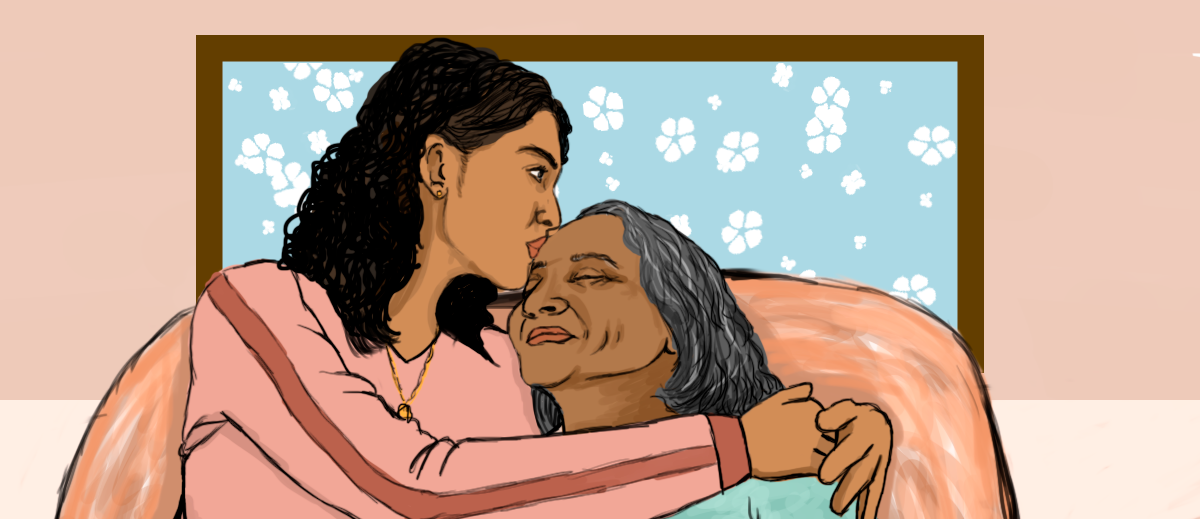
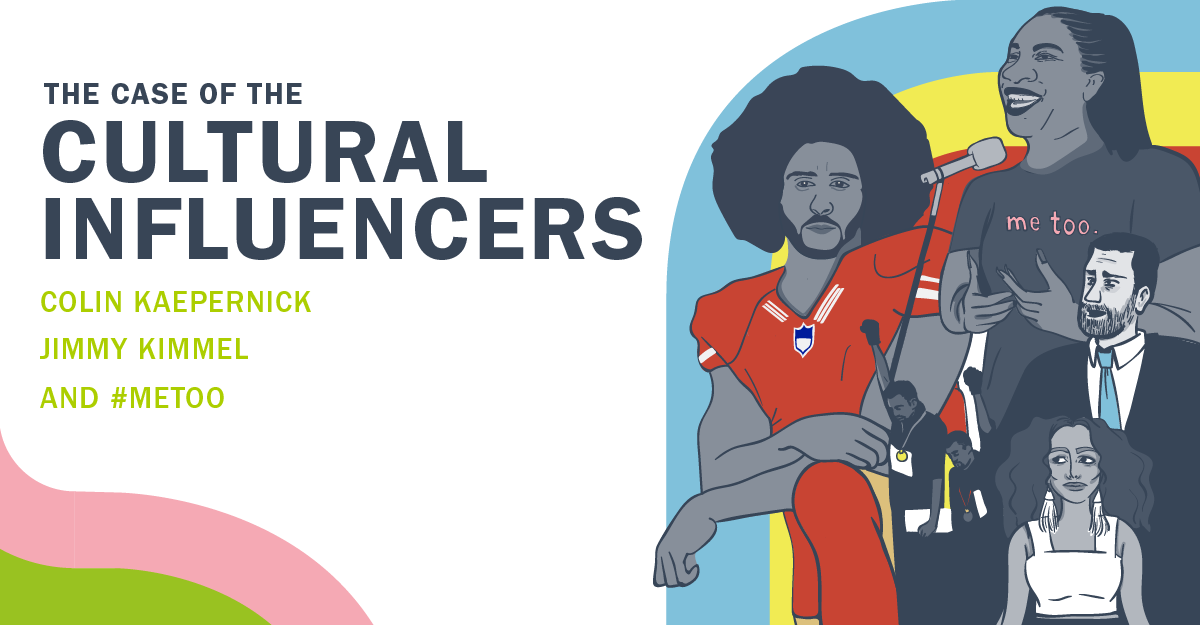
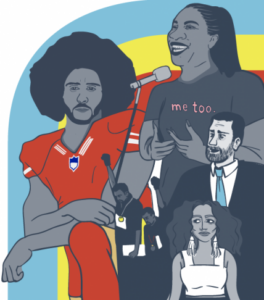 In recent years, the power of popular entertainment to inspire large audiences and shift cultural norms has become a topic of growing interest in the social advocacy space. A large body of research has been dedicated to tracking representation trends in film and television, and a growing cohort of organizations provides practical recommendations for those seeking to leverage popular culture in their advocacy work. While existing research has provided critical insights into the effectiveness of high-profile spokespeople in short-term campaigns and fundraising, significant gaps in the literature exist in terms of in-depth analysis of more symbolic actions on the part of high-profile individuals as well as measurements of the impact of celebrity influencers on long-term narrative shift.
In recent years, the power of popular entertainment to inspire large audiences and shift cultural norms has become a topic of growing interest in the social advocacy space. A large body of research has been dedicated to tracking representation trends in film and television, and a growing cohort of organizations provides practical recommendations for those seeking to leverage popular culture in their advocacy work. While existing research has provided critical insights into the effectiveness of high-profile spokespeople in short-term campaigns and fundraising, significant gaps in the literature exist in terms of in-depth analysis of more symbolic actions on the part of high-profile individuals as well as measurements of the impact of celebrity influencers on long-term narrative shift. Significant increases in news media and social media engagement with social justice issues: All three case studies revealed a marked increase in both the volume and focus on news media and social media engagement. For instance, since Colin Kaepernick and other athletes began taking a knee, news media coverage of police misconduct has nearly doubled (from an average of 4000 articles to 7000 articles published every 12 months), and social media engagement with the issue has seen a nearly three-fold increase.
Significant increases in news media and social media engagement with social justice issues: All three case studies revealed a marked increase in both the volume and focus on news media and social media engagement. For instance, since Colin Kaepernick and other athletes began taking a knee, news media coverage of police misconduct has nearly doubled (from an average of 4000 articles to 7000 articles published every 12 months), and social media engagement with the issue has seen a nearly three-fold increase.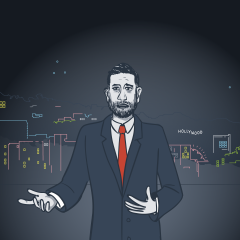 Direct or indirect policy and cultural changes in organizations and institutions: The case studies in this report have resulted in a myriad of organizational policy and cultural shifts as a direct and indirect result of the efforts of high-profile influencers. In the case of Jimmy Kimmel, the Graham-Cassidy bill was ultimately defeated. Since Kaepernick and other athletes began taking a knee in protest to police killings of unarmed people of color, the National Football League (NFL) and several teams have spoken out in support of criminal justice reform. For instance, in September 2016, shortly after Kaepernick’s first field-side protest, the San Francisco 49ers announced that it would be donating $1 million to two charities in the Bay area focused on racial and economic justice. In January2018, the NFL in conjunction with players formed the “Let’s Listen Together” coalition, which aims to improve police and community relations. As of July 2018, 10 NFL teams have announced the launch of new committees, coalitions, or other activities aimed at raising awareness and tackling social justice issues. The Me Too movement has had a similar impact. Since the Me Too movement first began to proliferate in October 2017, more than 800 high-profile figures have been publicly accused of harassment, sexual assault, rape, workplace misconduct, and other related behavior. A recent article details the range of policy changes that have been introduced across industries because of the Me Too movement. This includes the introduction of mandatory annual anti-harassment trainings for lawmakers and staff in Congress and the inclusion of so-called “Weinstein Clauses” in several large mergers and acquisitions.
Direct or indirect policy and cultural changes in organizations and institutions: The case studies in this report have resulted in a myriad of organizational policy and cultural shifts as a direct and indirect result of the efforts of high-profile influencers. In the case of Jimmy Kimmel, the Graham-Cassidy bill was ultimately defeated. Since Kaepernick and other athletes began taking a knee in protest to police killings of unarmed people of color, the National Football League (NFL) and several teams have spoken out in support of criminal justice reform. For instance, in September 2016, shortly after Kaepernick’s first field-side protest, the San Francisco 49ers announced that it would be donating $1 million to two charities in the Bay area focused on racial and economic justice. In January2018, the NFL in conjunction with players formed the “Let’s Listen Together” coalition, which aims to improve police and community relations. As of July 2018, 10 NFL teams have announced the launch of new committees, coalitions, or other activities aimed at raising awareness and tackling social justice issues. The Me Too movement has had a similar impact. Since the Me Too movement first began to proliferate in October 2017, more than 800 high-profile figures have been publicly accused of harassment, sexual assault, rape, workplace misconduct, and other related behavior. A recent article details the range of policy changes that have been introduced across industries because of the Me Too movement. This includes the introduction of mandatory annual anti-harassment trainings for lawmakers and staff in Congress and the inclusion of so-called “Weinstein Clauses” in several large mergers and acquisitions.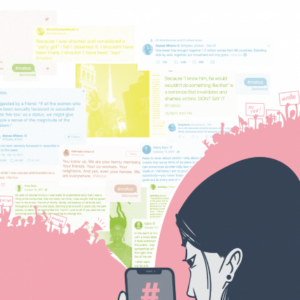 Encouraging other high-profile individuals and members of the public to speak out: Each case study was characterized by high-profile influencers successfully encouraging others to speak out in support of or opposition to an issue. Following a series of monologues from Jimmy Kimmel, several Republican senators spoke out openly against the Graham-Cassidy bill, eventually leading to its defeat. Since Kaepernick first begin his protest in August 2016, more than 200 athletes have sat or kneeled during the national anthem. Our analysis revealed that a significant portion of news media and online discourse focused on actions and commentary of other high-profile athletes and spokespeople. In the case of the Me Too movement, not only did the personal stories of high-profile entertainers propel the issue of gendered violence into the national discourse, but also subsequent coordinated efforts of the Time’s Up campaign maintained engagement with the issue after media coverage began to wane.
Encouraging other high-profile individuals and members of the public to speak out: Each case study was characterized by high-profile influencers successfully encouraging others to speak out in support of or opposition to an issue. Following a series of monologues from Jimmy Kimmel, several Republican senators spoke out openly against the Graham-Cassidy bill, eventually leading to its defeat. Since Kaepernick first begin his protest in August 2016, more than 200 athletes have sat or kneeled during the national anthem. Our analysis revealed that a significant portion of news media and online discourse focused on actions and commentary of other high-profile athletes and spokespeople. In the case of the Me Too movement, not only did the personal stories of high-profile entertainers propel the issue of gendered violence into the national discourse, but also subsequent coordinated efforts of the Time’s Up campaign maintained engagement with the issue after media coverage began to wane.
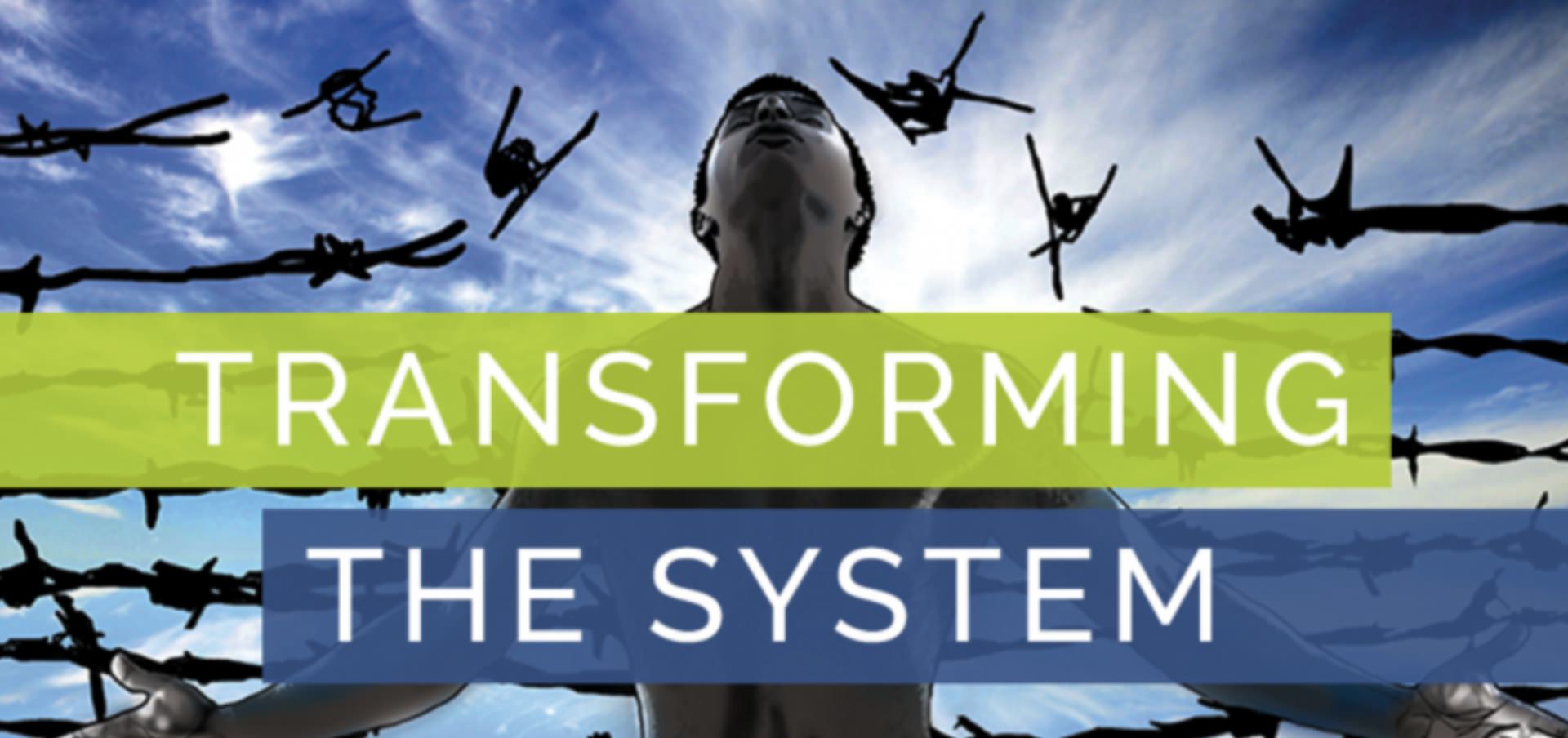
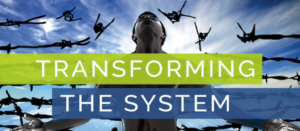
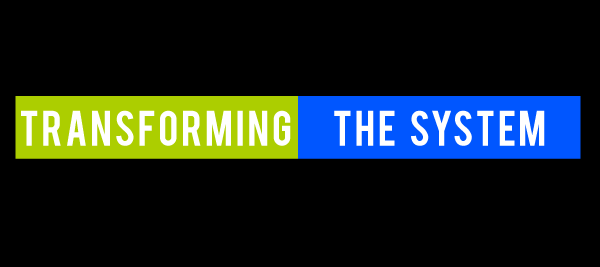
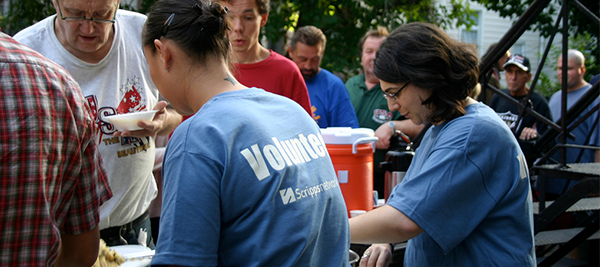
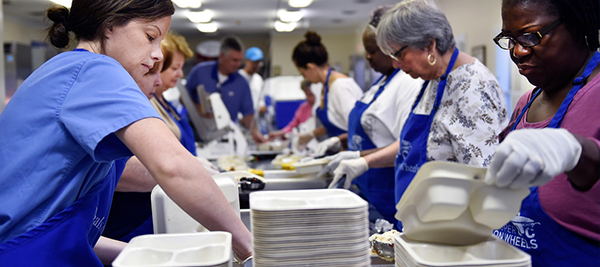

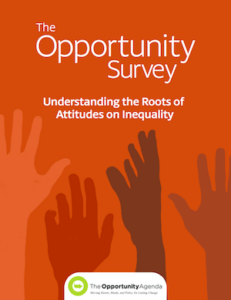 In 2014, The Opportunity Agenda commissioned a groundbreaking nationwide survey to examine what the U.S. public thinks about opportunity in America and to measure public support for policies that expand opportunity across a range of issues, including jobs, education, criminal justice reform, immigration, and housing. Additionally, the research sought to gain a deeper understanding of the multiple factors that influence attitudes on inequality, contribute to an individual’s worldview, and predict people’s willingness to take action on issues they care about. Together, the survey’s findings offer critical insights for social justice leaders and organizations seeking to move hearts, minds, and policy.
In 2014, The Opportunity Agenda commissioned a groundbreaking nationwide survey to examine what the U.S. public thinks about opportunity in America and to measure public support for policies that expand opportunity across a range of issues, including jobs, education, criminal justice reform, immigration, and housing. Additionally, the research sought to gain a deeper understanding of the multiple factors that influence attitudes on inequality, contribute to an individual’s worldview, and predict people’s willingness to take action on issues they care about. Together, the survey’s findings offer critical insights for social justice leaders and organizations seeking to move hearts, minds, and policy.